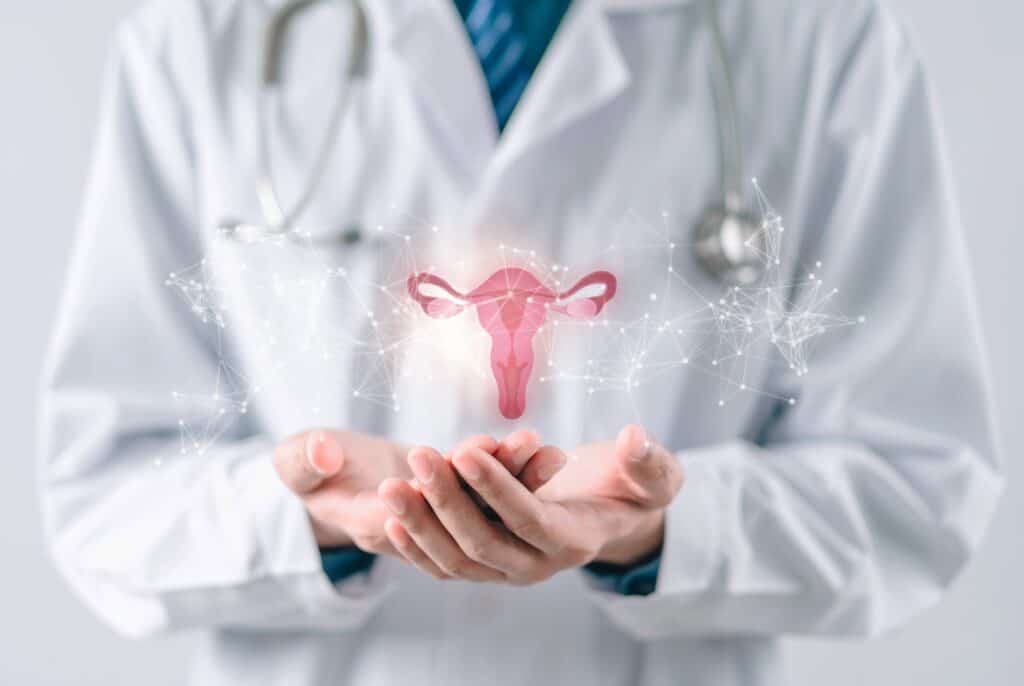
Cervical cancer ranks fourth among global women’s cancers, with approximately 660,000 new cases reported in 2022. Alarmingly, low- and middle-income countries account for 94% of the 350,000 cervical cancer deaths that year. Regions like sub-Saharan Africa, Central America, and South-East Asia bear the highest burdens due to disparities in healthcare access, HIV prevalence, and socio-economic factors like poverty and gender biases.
Women living with HIV are six times more vulnerable to cervical cancer, with 5% of cases attributed to HIV. This disease disproportionately affects younger women, contributing to 20% of children losing their mothers to cancer.
Urgent actions, including HPV vaccination, screening, and early treatment, are vital to address this pressing global health challenge. Efforts are underway worldwide to eliminate cervical cancer by 2030, focusing on key targets for collective progress.
Causes
HPV, a common sexually transmitted infection, affects the skin, genital area, and throat. While most people contract HPV at some point, often symptom-free, the immune system typically clears it. However, persistent high-risk HPV infections can lead to cancer, particularly cervical cancer, responsible for 95% of cases. The progression from abnormal cells to cancer usually takes 15–20 years, but can accelerate in individuals with weakened immune systems.
Risk factors include HPV type, immune health, other infections, reproductive history, hormonal contraception, and smoking. Early detection through regular screenings is vital for prevention. The HPV vaccine targets strains responsible for up to 90% of cervical cancers, offering significant protection.
Prevention
The HPV vaccine is recommended for preteens aged 11–12, with the option to start as early as 9 years old, to protect against HPV infections that can lead to cancer. For those aged 9–26 who missed earlier vaccination, it’s still advised.
CDC suggests two doses for 11- to 12-year-olds, while three doses are needed for those aged 15–26 starting the series. Some may require a third dose if they received the first two doses too close together, or if they have weakened immune systems. Vaccination isn’t recommended for those older than 26.
Three FDA-approved vaccines protect against HPV, with Gardasil 9 being the sole option in the U.S. since late 2016. These vaccines have shown over 90% efficacy in preventing HPV-related cancers. Since 2006, HPV vaccination has significantly reduced infections and related conditions among teens and young adults, with long-lasting protection observed even after more than a decade of follow-up.
Cervical Cancer Screening
Cervical cancer screening aims to detect precancerous cell changes, allowing for early intervention to prevent cancer development. Occasionally, cancer itself is identified during screening, with early-stage cancers being more manageable. Delayed diagnosis, often indicated by symptoms, may signify advanced cancer stages, complicating treatment.
Screening methods include the HPV test, which detects high-risk HPV infections, the Pap test, which examines cervical cells for HPV-induced changes and cancerous cells, and the HPV/Pap co-test, combining both tests to assess HPV presence and cervical cell alterations simultaneously.
The widespread use of the Pap test significantly reduced the death rate associated with cervical cancer; however, over the past decade, there has been little change in the death rate. In recent years, the HPV test has been approved as an additional screening tool for cervical cancer. This test detects high-risk HPV strains that are more likely to lead to cervical pre-cancers and cancers. It can be administered alone as the primary HPV test or alongside the Pap test in what is called a co-test.
Screening tests provide the best opportunity for early detection of cervical cancer when treatment is most effective. Screening can even prevent the majority of cervical cancers by identifying abnormal cervical cell changes (pre-cancers) and enabling timely treatment.
Despite the advantages of cervical cancer screening, not all American women undergo screening. Most cases are diagnosed in women who have never undergone a Pap test or have not had one recently. Women without health insurance and recent immigrants are less likely to undergo cervical cancer screening.
When and how often is testing performed?
The frequency and types of cervical cancer screening tests individuals should undergo depend on age and medical background. Despite HPV vaccination, which doesn’t guard against all high-risk HPV strains, individuals with a cervix who have been vaccinated should adhere to cervical cancer screening guidelines.
According to the updated guidelines by the American Cancer Society (ACS), screening for cervical cancer is recommended to commence at the age of 25. Individuals aged 25 to 65 should undergo a primary HPV test every five years. Recent studies prompted the ACS to conclude that cervical cancer screening for individuals aged 21 to 24 may cause more harm than benefit. This change is influenced by the effectiveness of HPV vaccines.
The first vaccinated cohort, now in their 20s, experiences reduced HPV infections and cervical precancer rates. Since most HPV infections in young women resolve spontaneously, screening at this age often leads to unnecessary treatments with potential side effects. Therefore, ACS recommends starting screening at age 25.
If primary HPV testing is unavailable, screening can be conducted using either a co-test (combining an HPV test with a Pap test) every five years or a Pap test alone every three years. It’s crucial to maintain regular screening regardless of the specific test employed.
For those over 65 who have had consistent screening with normal results over the past decade and no history of CIN2 or more severe diagnosis in the last 25 years, cervical cancer screening should be discontinued and not resumed once stopped. Those who have undergone a total hysterectomy, except for cases where it was performed as a treatment for cervical cancer or severe pre-cancer, should cease screening.
Individuals who have had a hysterectomy without cervix removal should continue cervical cancer screening as per the aforementioned guidelines. Even those vaccinated against HPV should adhere to these age-specific screening recommendations. Here is the summary of the updated recommendations by the ACS:
Age 21-24
No need for screening
Age 25-29
HPV test every 5 years (preferred)
HPV/Pap cotest every 5 years (acceptable)
Pap test every 3 years (acceptable)
Age 30-65
HPV test every 5 years (preferred)
HPV/Pap cotest every 5 years (acceptable)
Pap test every 3 years (acceptable)
Age 65 and older
No need for screening if a series of prior tests were normal. The latest test should have been conducted within the past 3 to 5 years, depending on the specific type of test.
What to expect during the exam?
During a pelvic exam, cervical cancer screening tests are conducted. The patient lies on their back with knees bent and feet in support stirrups. Using a speculum, the healthcare provider opens the vagina to access the cervix and collects cell samples. These samples are sent for analysis, checking for HPV infection and abnormal cell changes (Pap test). Other aspects of pelvic health may also be examined.
Healthcare providers should guide patients through each step for comfort. Researchers suggest using larger speculums for better cervical visualization during screening, especially for individuals with obesity.
Additionally, a pelvic exam may involve more than just sample collection. Your healthcare provider may also assess the size, shape, and position of the uterus and ovaries, and check for any lumps or cysts. Screening for sexually transmitted infections can also be discussed.
Where to get tested?
Cervical cancer screening, including HPV and Pap tests, is available at doctors’ offices, clinics, and community health centers. Patients can receive these tests from their ob/gyn or primary care provider. If the patient doesn’t have a regular doctor, they can find a clinic offering screening by contacting your state or local health department, Planned Parenthood clinics, NCI’s Cancer Information Service, or the National Breast and Cervical Cancer Early Detection Program (NBCCEDP).
The CDC’s National Breast and Cervical Cancer Early Detection Program (NBCCEDP) offers breast and cervical cancer screenings and diagnostic services for low-income, uninsured, or underinsured women. To locate a screening program in your area, you can visit the following link: CDC’s NBCCEDP Screening Programs.
Test Results
Receiving test results may take up to three weeks. If there’s any indication of abnormality, the doctor will contact the patient to discuss further steps. Abnormal results can stem from various reasons and often don’t indicate cancer; however, if results suggest potential cancer development, a doctor would advise on necessary treatment options, which can often prevent cervical cancer.
It’s crucial to promptly follow up on test results for detailed insights and potential treatment. Conversely, if the results are normal, the risk of cervical cancer in the near future is minimal. A doctor might recommend waiting several years before the next screening but still encourages regular checkups.
In conclusion, cervical cancer screening tests play a crucial role in the early detection and prevention of cervical cancer, which ranks among the most prevalent cancers affecting women worldwide. By detecting abnormal cell changes or cancerous cells early, these screening tests enable timely intervention, significantly improving the chances of successful treatment and reducing mortality rates.
Furthermore, screening can identify precancerous lesions, allowing for preventive measures to be taken before cancer develops. The availability of screening tests, along with adherence to recommended screening guidelines, is essential for maximizing the effectiveness of cervical cancer prevention efforts. Therefore, raising awareness about the importance of regular screening and ensuring access to screening services for all women are paramount.
Through widespread screening initiatives and timely follow-up care, we can continue to make significant strides towards reducing the burden of cervical cancer and saving lives.
Sources and More Information
American Cancer Society. (2021, April 22) The American Cancer Society Guidelines for the Prevention and Early Detection of Cervical Cancer. https://www.cancer.org/cancer/types/cervical-cancer/detection-diagnosis-staging/cervical-cancer-screening-guidelines.html
Centers for Disease and Control. (2021, November 16) HPV vaccination: What everyone should know | CDC. (n.d.). https://www.cdc.gov/vaccines/vpd/hpv/public/index.html
National Cancer Institute Publication. (2021, September). Understanding Cervical Changes: A Health Guide. https://www.cancer.gov/types/cervical/screening/abnormal-hpv-pap-test-results/understanding-cervical-changes.pdf
National Cancer Institute. (2023, April 27). Cervical Cancer Screening. https://www.cancer.gov/types/cervical/screening#:~:text=The%20Pap%20test%20(also%20called,cells%20and%20cervical%20cancer%20cells.
Stelze, Dominik et al. (2020) Estimates of the global burden of cervical cancer associated with HIV. https://doi.org/10.1016/S2214-109X(20)30459-9
The American College of Obstetricians and Gynecologists. (2021, May) Cervical Cancer Screening: What is it? https://www.acog.org/womens-health/infographics/cervical-cancer-screening


